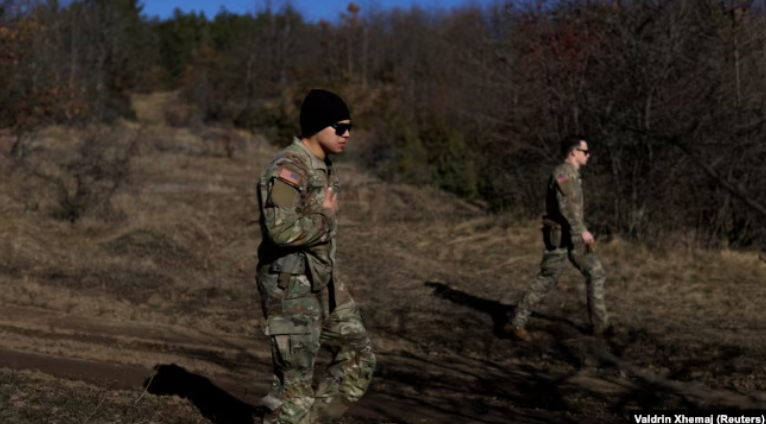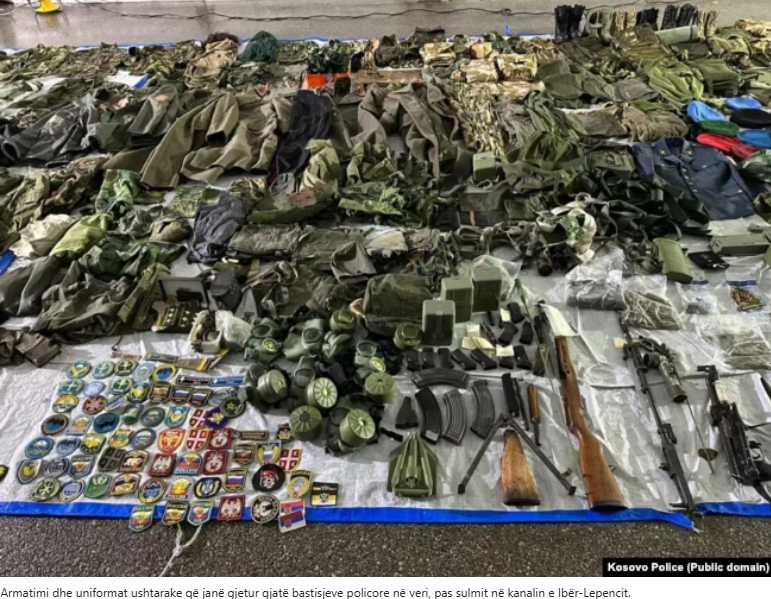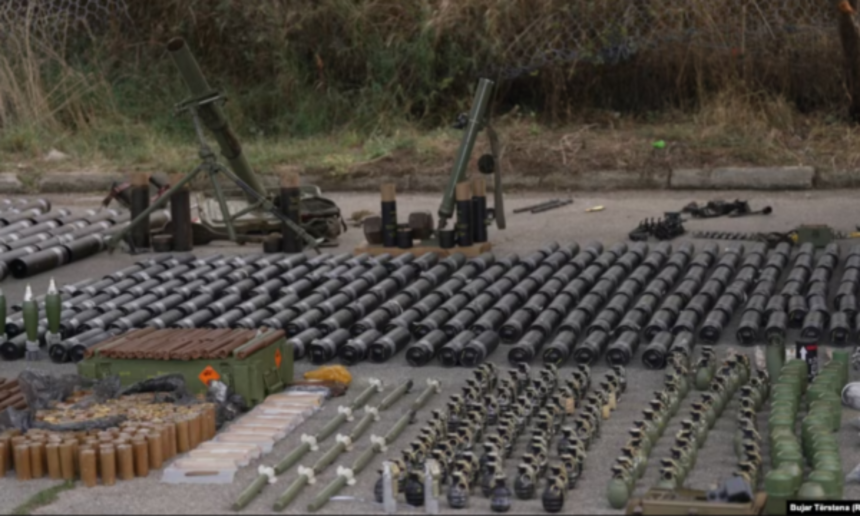“It is a public secret that the north of Kosovo has had a lot of weaponry. It has been an armament depot.”
This is how the director of the Kosovo Police, Gazmend Hoxha, described this part of the territory, speaking on the Radio Television of Kosovo about the weapons that are consistently found during police raids.
In less than a week, the police have found weapons and military uniforms twice in the north of Kosovo, in operations carried out after the November 29th attack on the Ibar-Lepenc canal in Zubin Potok.
The police stated that the attack on the canal — which supplies several cities in the country with water from Lake Ujman, as well as the Kosovo Energy Corporation for cooling its thermal power plants — was carried out with around 20 kilograms of explosives.
Meanwhile, Kosovo’s Minister of Internal Affairs, Xhelal Sveçla, stated that the material used in the canal attack “cannot be found unless directly supplied from military depots.”
Kosovo authorities blame Serbia for the infiltration of weapons into Kosovo, as well as for organizing and carrying out what they consider terrorist attacks on the Ibar-Lepenc canal and in Banjska, Zvečan, a year ago.
Belgrade denies all claims, even offering assistance in the investigation of the latest attack.
The challenge at the Kosovo-Serbia border
Kosovo’s Customs Administration previously told Radio Free Europe that weapons have entered through “mountainous routes.”
According to their officials, several types of weapons might have entered Kosovo even within a day through illegal routes before the Banjska attack.
Meanwhile, the Police Chief stated that dozens of illegal routes along the border with Serbia have now been blocked, but the challenge lies in the inability of police officers to be close enough to the border.
The two countries share a border line of approximately 400 kilometers.
Over 60% of this border includes municipalities with a Serbian majority in northern Kosovo. A considerable part of it is a rugged, uninhabited terrain, making it nearly impossible to monitor every section of the border.
Kosovo’s borders with Serbia are the responsibility of the NATO mission in Kosovo (KFOR), while the rest of the border is managed by the Kosovo Police.
However, according to a 2014 decision by the KFOR commander at the time, the Police can patrol up to 1 kilometer near the demarcation line.
Former Director of Kosovo Police, Rashit Qalaj, believes that illegal routes are controlled very little, or not at all, and while he praises the work of police officers, he says they lack the most crucial element: information.
“Security institutions, especially the Kosovo Intelligence Agency (KIA), must be much more vigilant, and the intelligence within the Kosovo Police must be more active on the ground, operating proactively,” he stated.

Other borders
Qalaj adds for RFE that, in addition to Serbia, weapons are being smuggled into Kosovo from Albania as well, and thus authorities need to increase control over every border area.
“As for the weapons, yes, focusing on the north is good, but we also need to focus on other parts of the country, because criminals collaborate. They do not recognize nationality, nor the language people speak,” he emphasized.
Fatmir Çollaku, an expert on security issues, believes that weapons from Serbia have entered Kosovo even after the Banjska attack, but not from Albania.
“Increased vigilance and frequent patrols by border police, along with members of [the European Union Rule of Law Mission in Kosovo] EULEX and KFOR, would contribute to reducing, if not entirely preventing, at least a significant reduction in the possibility of weapons and military equipment entering Kosovo’s territory,” he said.
Seized weapons
The police have stated several times that the seized weapons are old and range from ammunition and grenade launchers to high-caliber weapons, machine guns, sniper rifles, anti-infantry mines, and detonators.
RFE’s Digital Forensics Unit has verified that some of the weapons were produced in the 1990/91 period in Serbian factories “Prvi Partizan” and “Millan Bllagojević.”
The Kosovo Police has not provided information, despite RFE’s request, to understand how many individuals have been arrested over the years for smuggling weapons into Kosovo.
The weaponry and military uniforms found during police raids in the north, after the attack on the Ibar-Lepenc canal, are part of ongoing investigations.
Security risk
In local and international reports, the security situation in the north is considered calm but fragile, with the potential for rapid escalation.
Police Director Hoxha has repeatedly stated that the institution he leads has the potential to carry out massive raids in the north but cannot do so unless everything is done in accordance with the law, and there must be well-founded suspicion.
Security experts in Kosovo have often suggested the use of drones for monitoring the borders, setting up cameras in more critical border areas, or increasing international pressure on Serbia to curb the flow of weapons.








